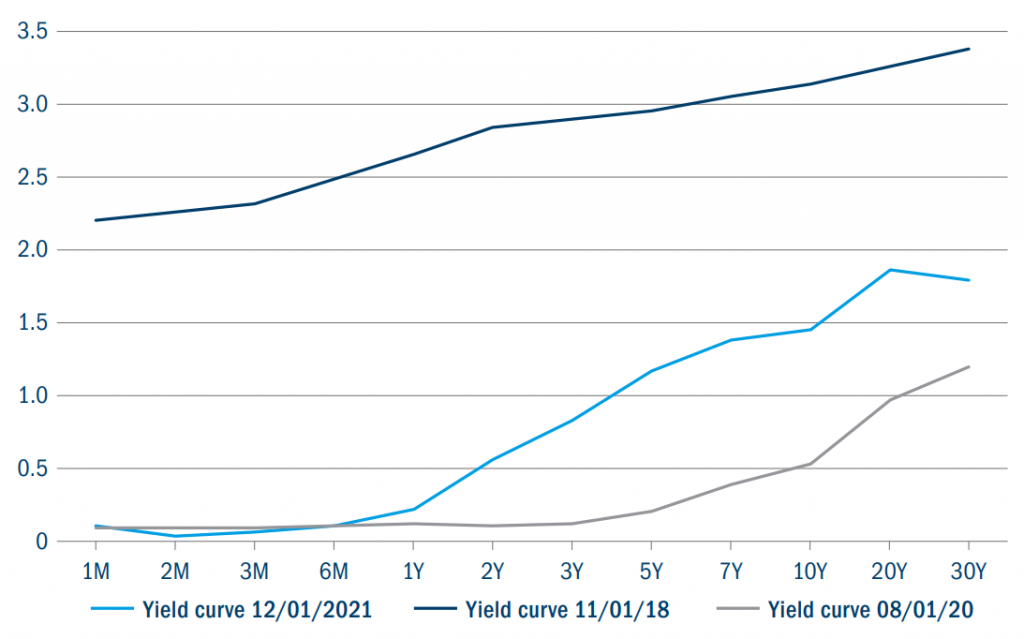Monetary policy is set to become less supportive in 2022. Here’s what it means for rates and the yield curve.
Three hikes in 2022?
At its December meeting, the US Federal Reserve left policy rates unchanged, near zero, while signaling a willingness to hike as many as three times in 2022 to combat inflation. It also announced an acceleration in the pace of the taper that could see the asset purchase program end by March. Once this occurs, the Fed expects to begin raising rates, with an additional three increases penciled in for 2023 and two more in 2024. This would bring the Fed Funds rate close to its estimated neutral level, where monetary policy is neither easy nor tight, of 2.5%.
Surprises are possible, so avoid making big bets on long-duration assets
The direction of long-term Treasury yields depends on how the Fed responds to current inflation. The Fed is accelerating its removal of liquidity because inflation has broadened, which has the potential to push 10-year yields higher. But it must be careful not to act too aggressively, which could derail the economic recovery and cause a recession. We think remaining flexible and willing to adjust duration as the year progresses is the best course of action.
Figure 1: Rates are up from Covid lows, but are unlikely to reach pre-pandemic highs

Traditional inflation hedges are expensive
Many of the traditional inflation hedges, including commodities and Treasury Inflation-Protected Securities (TIPS), are expensive and lock in negative real interest rates. An alternative way to hedge portfolios for inflation risk is by remaining defensive with duration and active within commodity-centric credit exposures.
Tighter financial conditions set the stage for greater volatility
As the Fed begins to withdraw liquidity from the financial system, we will see tighter financial conditions, meaning wider credit spreads and greater volatility. This leaves risk assets more vulnerable to shocks. Finding winners and losers as rates increase puts greater emphasis on research that can distinguish between the two.
Rethinking the role of US Treasuries in asset allocation
We are heading into an environment in which risk assets – like emerging market bonds and high yield – are both more expensive and more vulnerable. Picking the right bonds through credit research becomes essential in this environment. In addition, allocating to US Treasuries, despite record-low yields, could provide a buffer against potentially higher equity and credit risk.

